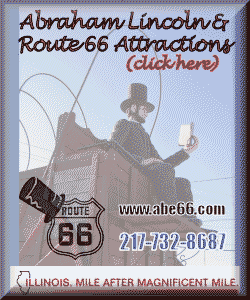|
Urban legend of Chicago epidemic, turning
'Western girls' into 'useful women,' and Chicago confidence man who duped
historians are featured in latest Journal of Illinois History
 Send a link to a friend
Send a link to a friend
[FEB. 8, 2007]
SPRINGFIELD -- The widely-believed urban legend
of the Great Chicago Epidemic of 1885, the Rockford College presidency of Julia
Gulliver and her drive to turn "Western girls" into "useful women," and Chicago
confidence man George W. Streeter's drive to work his way into the public's
imagination are featured in the latest issue of the Journal of Illinois History,
a scholarly publication about the state's history.
|
|
Many recent histories of Chicago mention 1885 epidemics that killed
up to 90,000 people, 12 percent of the city's population. These
cholera, typhoid and dysentery epidemics were reportedly triggered
by a flood that washed raw sewage into the city's water supply.
While the August 3, 1885 flood caused by a five-and-one-half-inch
rainfall in 19 hours really occurred, the epidemics did not. The
first mention of a supposed 1885 epidemic was made in 1941 by
Chicago Superintendent of Sewers Thomas D. Garry, who noted a
"fearful typhoid epidemic of 1885" but did not provide a source for
this information. Then, when the Metropolitan Sanitary District of
Chicago tried to drum up public support for its expensive "Deep
Tunnel" system underneath the city, it published a 1957 pamphlet
that noted the "death from the terrible diseases of polluted water"
that came from the 1885 storm. A 1964 newspaper advertisement
recognizing the 75th anniversary of the Sanitary District furthered
the legend, noting: "So it was … on that day in August 1885, when
nature pulled the stopper and the rains came, Chicago was to find
itself drinking raw sewage and death along with its breakfast
coffee. Death from water-borne disease raged thru the city."
Newspaper and magazine articles as late as 1979 still reported the
non-existent epidemic as fact. The article was written by Libby
Hill, author of "The Chicago River: A Natural and Unnatural
History."

The second article profiles Julia Gulliver, who came to
Rockford College in 1890 after becoming only the second woman in the
United States to earn a doctorate in philosophy. She was named
president of the college in 1902, and for the next 17 years
championed a vocational curriculum for the all-female school,
stressing home economics and secretarial work, through which she
hoped to increase enrollment and attract potential donors. For
decades, colleges had been criticized for not preparing women for
"duties peculiar" to them. Gulliver's response was to develop
coursework that would make "Western girls" into "useful women,"
recognizing women's roles as consumers who must have practical
applications for their knowledge. The article was written by Anne
Meis Knupfer, professor of educational studies at Purdue University.
[to top of second column] |

From 1886 to 1921 George Wellington Streeter spun lies, forged
legal documents, and used violence to wrest 186 acres of shoreline
from some of Chicago's most powerful businessmen. He also wrung
money from the pockets of the poor by selling them lots he did not
own. However, Streeter was a masterful promoter who portrayed
himself as pioneer who staked a claim and defended his land against
marauding capitalists. He convinced many contemporaries, including a
biographer, theater producer, radio disc jockey and several
historians, that he was a hero of the frontier, and he subsequently
became a celebrity. The article was written by Joshua Salzmann,
Ph.D. candidate at the University of Illinois at Chicago.
The Journal of Illinois History is the foremost publication for
readers who value documented research on the state's history, and
features articles, book reviews, essays and bibliographies that have
been reviewed by some of the country's leading historians. The journal is published by the
Illinois Historic Preservation Agency.
Subscriptions are $18 per year for four issues. To obtain a sample
copy, contact: Illinois Historic Preservation Agency, Publications
Section, 1 Old State Capitol Plaza, Springfield, IL 62701, or call
(217) 524-6045.
(Text
copied from Illinois
Historic Preservation Agency news release received from the
Illinois Office of Communication and Information)


|